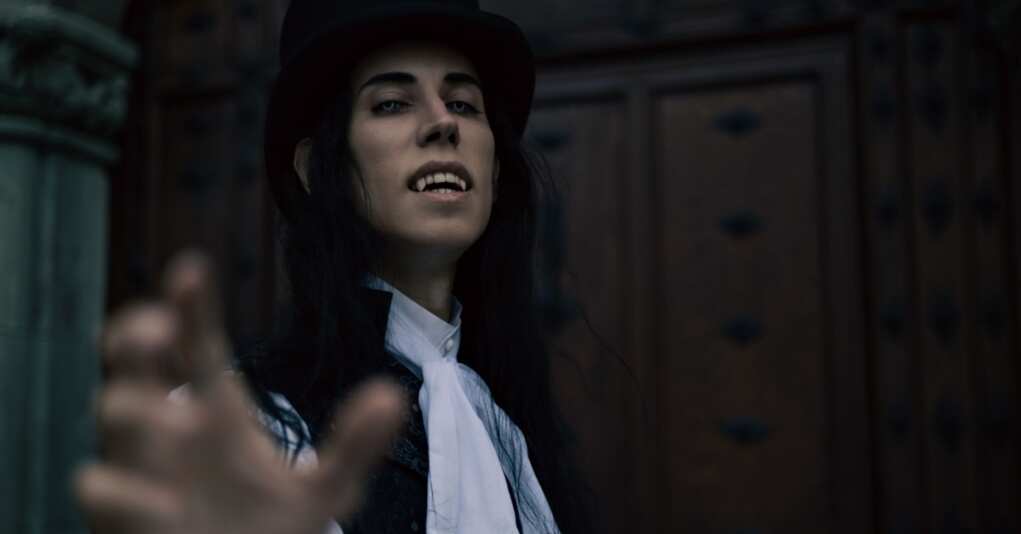Netflix Pulls the Plug on Vampire Exposé—Is Dayton’s Dark Secret Safe?

Ah, Netflix—where you can binge everything from cheesy rom-coms to gritty true crime. But if you’re hoping to sink your teeth into a dark tale of vampires and a decades-old mystery in Dayton, Ohio, you might want to brace yourself. It seems that the streaming giant has decided to pull the plug on the upcoming documentary “Vampires in Gem City,” leaving one Ohio family in the lurch and the rest of us questioning whether vampires really do prefer their secrets left in the shadows.
For nearly 30 years, the family of George Phillip Gall has been searching for answers after the then-26-year-old mysteriously disappeared on October 13, 1994. According to the bus driver, Gall was last seen walking toward the goth-themed Asylum nightclub, a place that catered to Dayton’s most devoted black-clad night owls. The club’s patrons, described as a “gothic, vampire-like” crowd, might have been just your run-of-the-mill goths—or perhaps something more sinister.
Fast forward to 2008, when a retired Dayton police officer dropped a bombshell: Gall’s disappearance might be tied to an underground vampire coven. The retired officer, who went undercover at the Asylum after Gall vanished, claims a bartender whispered to him that Gall was killed and beheaded as part of an occult ritual. The head, allegedly, was sold right there in the club. This horrifying tale wasn’t just some ghost story to spook the locals—it was filled with enough intricate details to make anyone’s blood run cold. The officer also mentioned finding occult markings in the storm sewer tunnels beneath the nightclub but no concrete evidence of Gall’s fate.
Rumors and urban legends have since swirled through Dayton like a dense fog. Tales of a headless man stalking the city’s tunnels, asking passersby where his head is, have become the stuff of local lore. Some say it’s Gall himself, while others chalk it up to overactive imaginations fueled by too many late-night horror flicks. George’s family, however, has remained grounded in their grief, searching for closure, not ghost stories.
The documentary was supposed to provide just that—a platform to finally shine a light on Gall’s disappearance. Initially announced by What’s on Netflix in February 2024, the project had all the makings of a cult classic. It promised to delve into both Gall’s case and the eerie underworld of Dayton’s alleged vampire community. But then, things got… weird. Director David Holthouse was swapped out for Joshua Rofé, and the focus shifted from Gall’s disappearance to an exposé on the vampire community itself.
A 2015 study by the Atlanta Vampire Alliance found that around 5,000 people in the U.S. identify as real vampires, with some even consuming blood from willing donors, according to Today.com. Ohio is the second-largest home to vampire covens in the U.S., just behind New Orleans, the heart of vampire culture and the inspiration for Anne Rice and Sherrilyn Kenyon novels.
Surprisingly, just as this documentary was set to sink its fangs into viewers, Netflix decided to stake it in the heart. George’s wife, Helen, and his maternal uncle, Dan Phelan, were informed via email that the documentary wouldn’t see the light of day after all. Why Netflix decided to pull the plug remains as mysterious as the urban legend itself. Was it the subject matter? The supernatural implications? Or did someone—or something—get to them first?
Despite the setback, Gall’s family remains hopeful that attention will still be brought to his case. Phelan has accepted that finding George’s remains may be a lost cause, but any awareness could help crack the case wide open. Or perhaps, just maybe, Netflix will have a change of heart and give this chilling story the platform it deserves. After all, with Halloween just around the corner, who doesn’t love a good vampire tale?
So, until Netflix decides to come clean, the mystery of “Vampires in Gem City” and George Gall’s disappearance will remain buried deep in the dark alleys of Dayton—and our imaginations.
